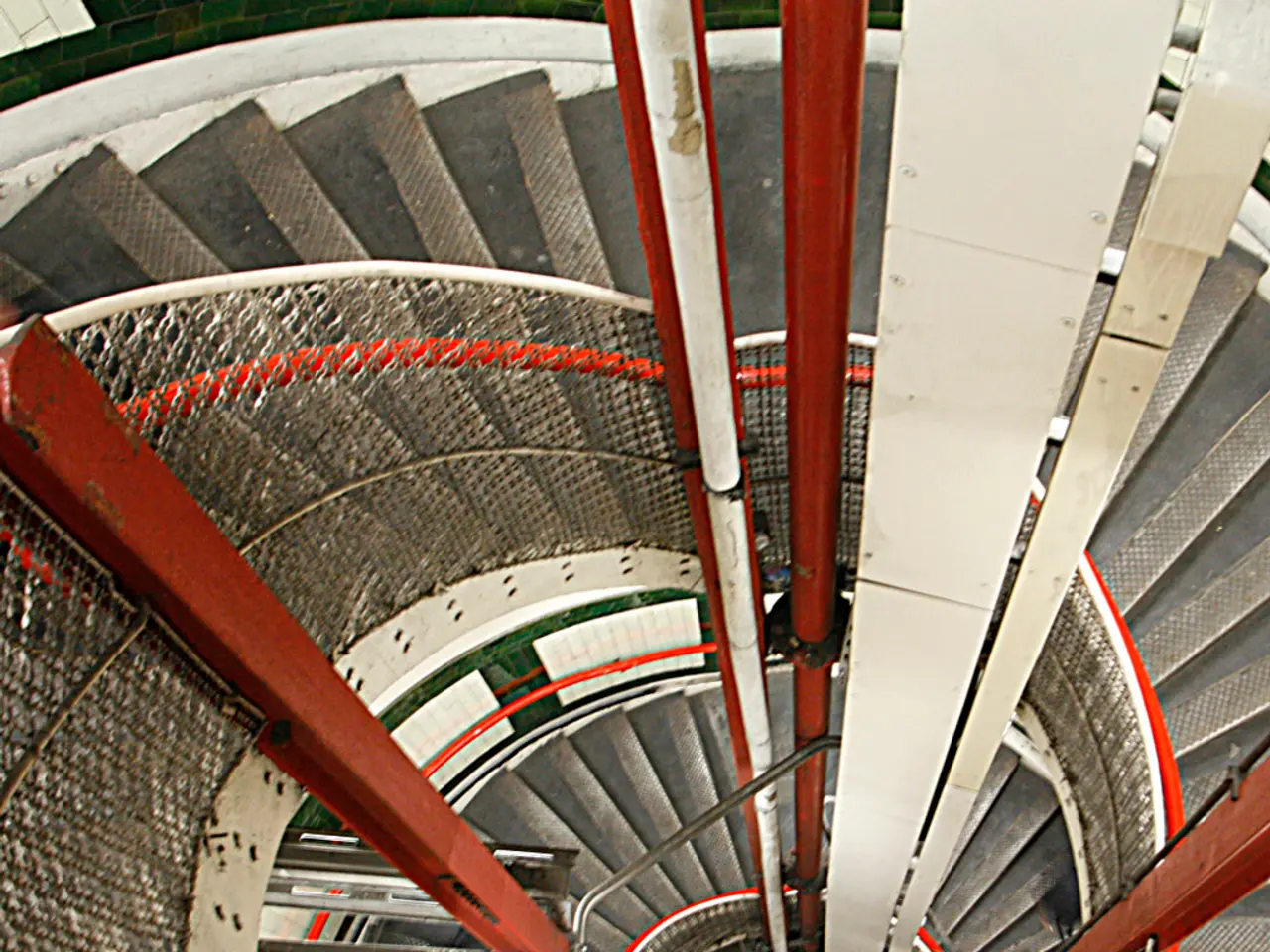Instructions for Installing a Stair Runner to Achieve a Modern or Timeless Appearance
Installing a stair runner can bring a fresh and stylish look to your home, while also protecting your stairs from general wear and tear. Here's a step-by-step guide on how to do it.
There are two main methods for installing a stair runner: stapling or using stair rods. A carpet tucker, such as the Draper Carpet Laying Bolster from Amazon, can be used to push the runner into the meeting point of the riser and tread for a neat finish. Stair rods, with options like the Daisy Upholstery Nails Tacks from Amazon, can be used for a decorative look that will help hold the runner in place.
When selecting a material for your stair runner, consider the level of traffic on your stairs. For high-traffic areas, a durable, tightly woven, and low-pile carpet made of materials like nylon or wool blends that resist wear and are easy to clean is ideal. Wool carpets, like the runrug Staircase Carpet Runner for Stairs from Amazon, are naturally hard wearing and repel dirt and stains.
Measuring the carpet for stairs accurately is crucial to avoid coming up short. It's recommended to measure twice and add ten percent extra to the measurements. The underlay or padding should be fixed down with glue, staples, or double-sided tape. A 12mm thick underlay made from eco-friendly materials can provide added comfort underfoot and improved noise reduction.
The edges of the runner can be tacked down with headless nails or decorative upholstery nails. An electric staple gun/nail gun is ideal for the occasional DIYer for installing a stair runner.
The runner should be rolled out, pulled tight, and stapled at the bottom of the first riser. Five staples should be enough to secure the runner in the first tread. Staples should be added along the bottom to complete the runner.
Preparing the stairs is important for a clean, flat, and prepared surface. This may involve removing paint, filling, staining, and painting (if necessary). Stairs with corners may require more planning and possibly professional help.
Switching from carpeted or wooden stairs to a stair runner can reduce noise levels significantly. A good quality stair runner can also increase grip, reducing the chance of slipping on a step. Light colours can help introduce an airy atmosphere to spaces craving natural light, while stripes and herringbones can make small or narrow spaces appear longer and more inviting.
For a touch of class, consider an ornate brass stair rod with antique styling. Guides on how to strip paint off wood, fix squeaky stairs, sand stairs, and paint stairs can help ensure a perfect finish.
A competent DIYer with the right tools should be able to tackle a straight stair runner. However, if you're dealing with corners, it's best to consult a professional. The stair runner should be attached to a gripper rod (if including landing space) or stapled at the start point.
Adding padding or underlay to a stair runner can improve comfort and reduce noise levels. The ideal type of carpet for stair runners with high traffic is a durable, tightly woven, and low-pile carpet made of materials like nylon or wool blends that resist wear and are easy to clean.
By following these steps, you can transform your stairs and bring a new, stylish look to your home. Happy DIYing!








